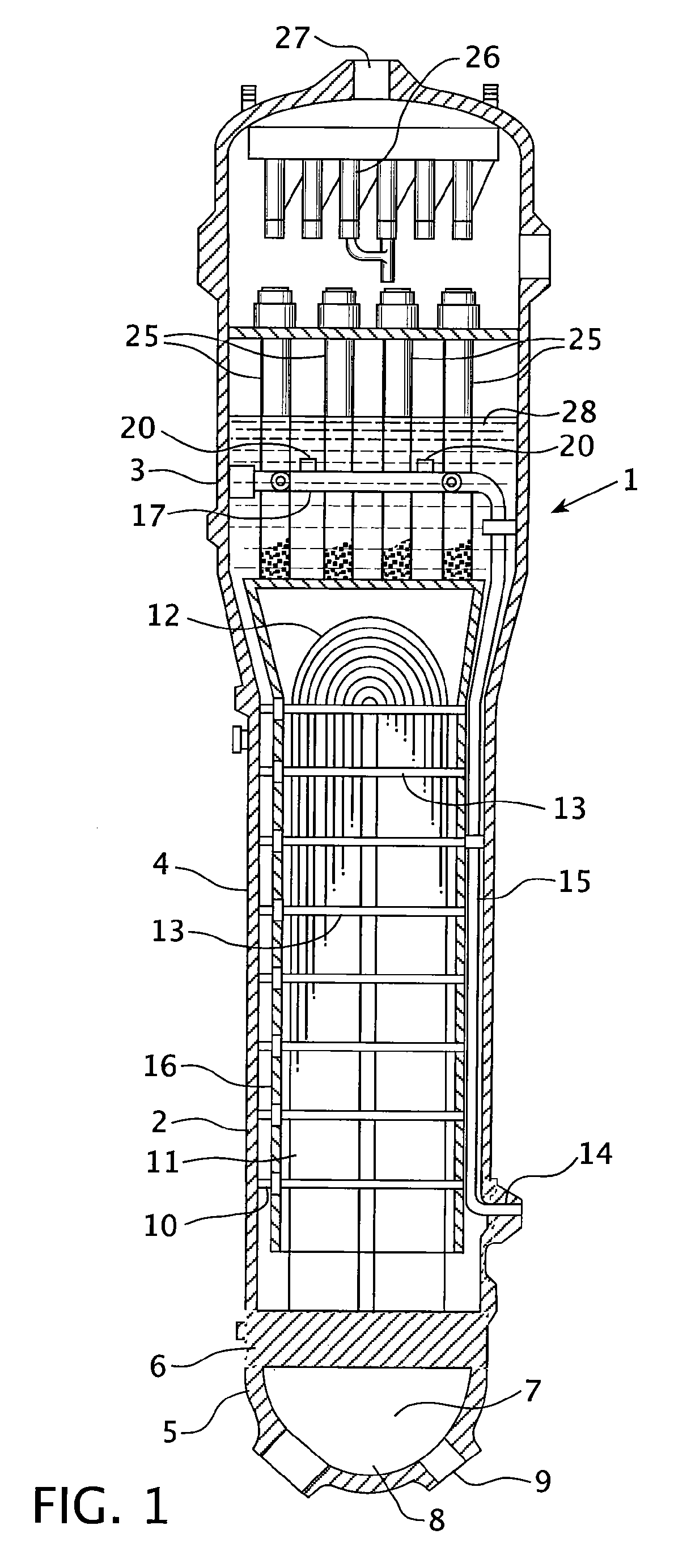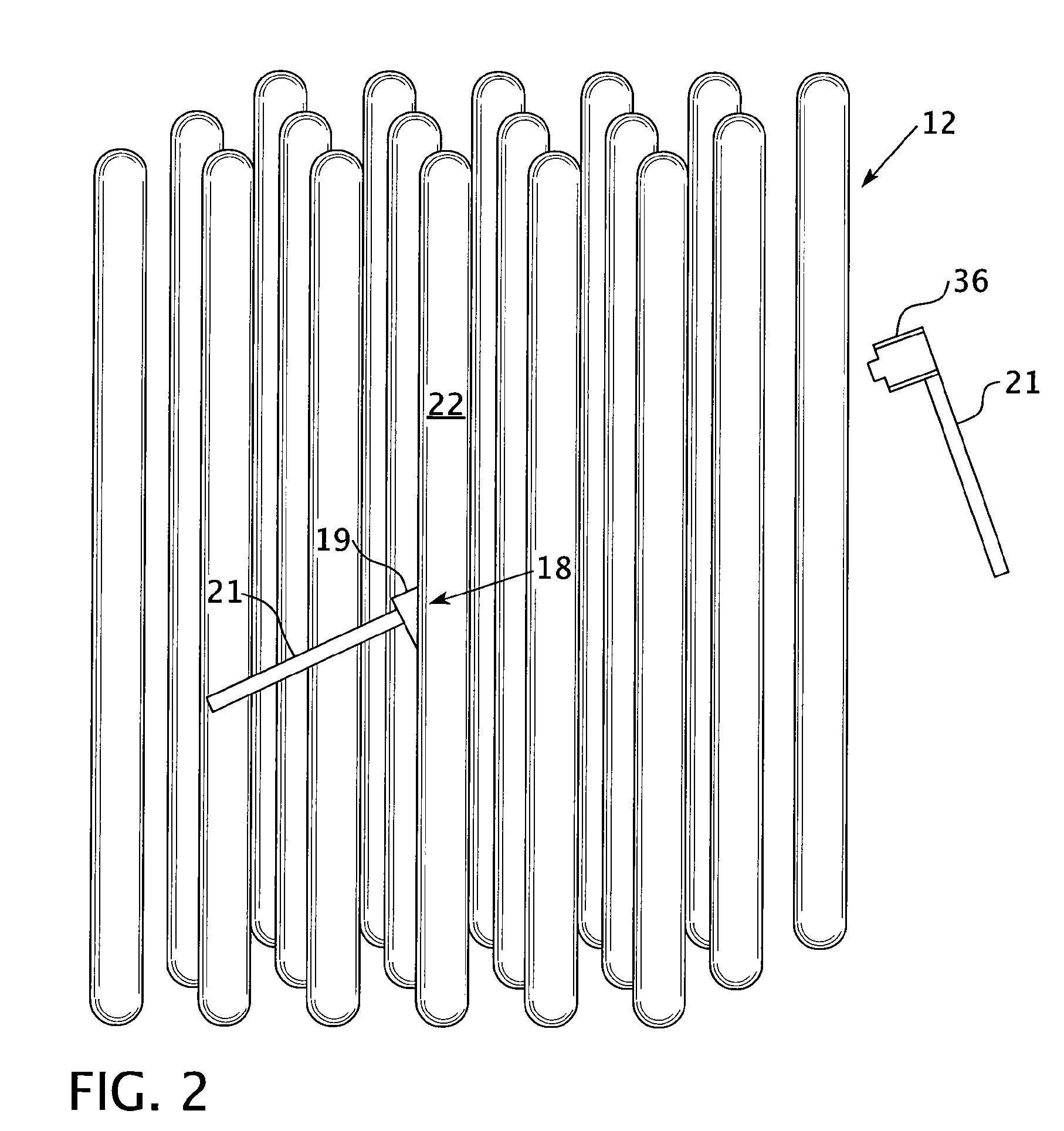Steam generator nondestructive examination method
a non-destructive examination and steam generator technology, applied in the direction of instruments, ultrasonic/sonic/infrasonic wave generation, specific gravity measurement, etc., can solve the problems of increasing radiation exposure of inspection personnel, slow and expensive eddy current method of steam generator tubing inspection, stress corrosion cracking,
- Summary
- Abstract
- Description
- Claims
- Application Information
AI Technical Summary
Benefits of technology
Problems solved by technology
Method used
Image
Examples
Embodiment Construction
[0020]As stated above, steam generators used in nuclear reactor power plants are very large heat exchangers in which heat from a primary fluid heated by the nuclear reactor is transferred to a secondary fluid “water” which is converted into steam and used to drive a turbine generator. FIG. 1 illustrates such a steam generator. The steam generator 1 comprises a steel shell 2 of generally cylindrical shape having a large upper steam section 3, a middle section 4, and a lower channel head section 5. A horizontal circular tube sheet or plate 6 is attached to the steel shell 2 and separates the lower channel head section 5 from the middle section 4. A vertical dividing plate 7 in the channel head section 5 is attached to the tube sheet 6 and at its bottom to the channel head 5 and serves to divide the channel head section 5 into a primary fluid inlet plenum 8 and a primary fluid outlet plenum (not shown). A pair of man holes 9 provide access to the channel head section 5, as required.
[00...
PUM
| Property | Measurement | Unit |
|---|---|---|
| frequency | aaaaa | aaaaa |
| distance | aaaaa | aaaaa |
| depth | aaaaa | aaaaa |
Abstract
Description
Claims
Application Information
 Login to View More
Login to View More - R&D
- Intellectual Property
- Life Sciences
- Materials
- Tech Scout
- Unparalleled Data Quality
- Higher Quality Content
- 60% Fewer Hallucinations
Browse by: Latest US Patents, China's latest patents, Technical Efficacy Thesaurus, Application Domain, Technology Topic, Popular Technical Reports.
© 2025 PatSnap. All rights reserved.Legal|Privacy policy|Modern Slavery Act Transparency Statement|Sitemap|About US| Contact US: help@patsnap.com



